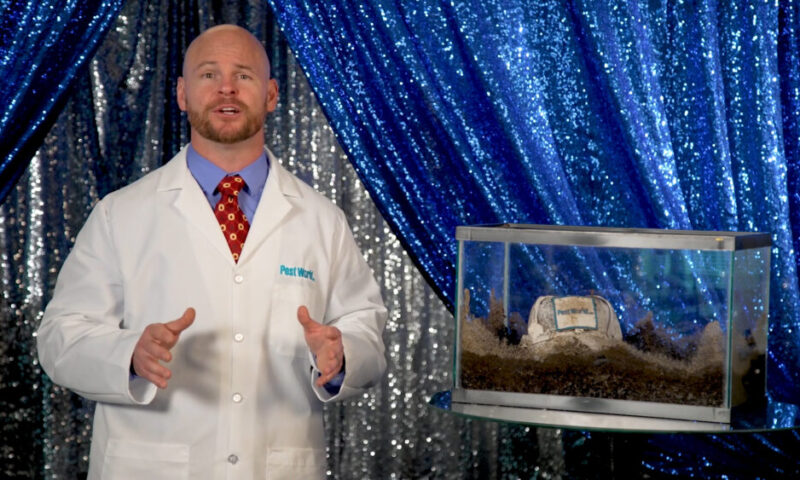
Pest Control Group Releases New Season of Termite-Filled Video Series
The second season of "Will They Eat It?" shows termites destroying a range of common objects—good fun that's also a good engagement tool for the industry.
The National Pest Management Association has released another season of a playful and popular series of YouTube videos showing how much damage termites can do.
The second season of “Will They Eat It?” features five short videos in which an NPMA entomologist drops thousands of termites into a tank filled with household objects, including a baseball cap, backpack, and more. The time-lapse videos show how much the insects have ravaged the objects, with a prompt to consumers to visit NPMA’s consumer-facing website for more information.
The new season is a follow-up to the series debut in 2019, which attracted hundreds of thousands of viewers. Though the videos are short and the set deliberately bare-bones, the project involves plenty of advance planning and strategizing, said Jim Fredericks, NPMA’s senior vice president for public affairs.
“Will They Eat It?” is officially a project of the Professional Pest Management Alliance, a sister trade organization of NPMA, with a 27-member board of leaders from pest-control companies and their suppliers and distributors. (Fredericks also serves as PPMA’s executive director.)
“Our job is providing proactive information and education to the public about how the pest control industry protects public health, food, and property,” he said.
As part of that mission, every year the PPMA Board approves a consumer-awareness campaign vetted by its marketing council. The first round of “Will They Eat It?,” produced by a public relations firm in partnership with PPMA, proved successful in 2019, but Fredericks said PPMA didn’t want to immediately repeat itself. Also, the videos require some advance planning and needed some adjustments before launching a second season.
For one thing, the shoots are time-consuming: Though the insects demolish a baseball cap in a video that’s around three minutes long, in reality it’s a lengthy process.
“Beyond just filming the show itself, we also have to collect the termites, house them in the laboratory, and keep the termites alive in the laboratory while they’re actually feeding on those items,” Fredericks said. “From when we introduce the items to when we unveil the final damage, that’s a six-week period.”
The shoots also require some travel from PPMA’s Washington, DC, area headquarters to New Orleans. “We’re using Formosan subterranean termites, which are an extremely aggressive and invasive species of termite found in the southeastern parts of the U.S.,” Fredericks said. “New Orleans is notorious for Formosan termite infestations, especially in the French Quarter.”
Filming the second season, Fredericks said, PPMA learned to keep a closer watch on its video talent. “Termites don’t necessarily want to cooperate with our food—they were constantly escaping from the tanks,” he said. “So for the second season, we definitely were on guard for escaping termites.”
One more practical change PPMA made was to release all five new episodes at once, rather than space them out, to better encourage binge-viewing. Though the approach is quirky, the ultimate goal is to drive consumers to NPMA’s website, and it’ll track success by that metric, Fredericks said.
If there’s a season three, Fredericks said, there won’t be a set upgrade. It’s more important that experts in the field vet the information and that the show conveys relevant and meaningful information on termites.
“People are relatively forgiving with regard to quality—you can do it on a relatively small budget,” he said. “But we want to make sure that the information that we’re communicating is accurate and factual.”
(National Pest Management Association)






Comments